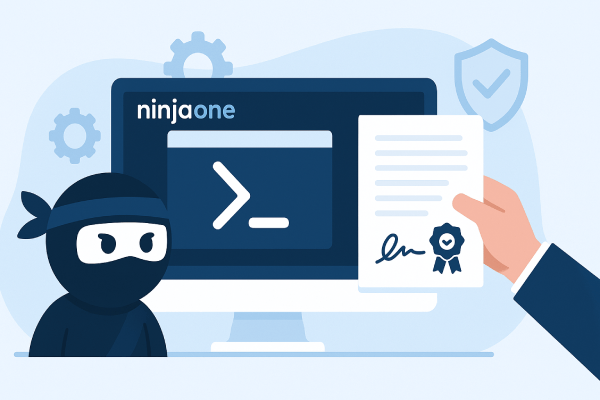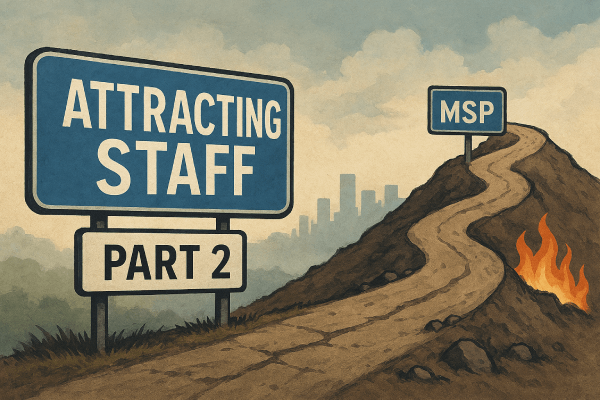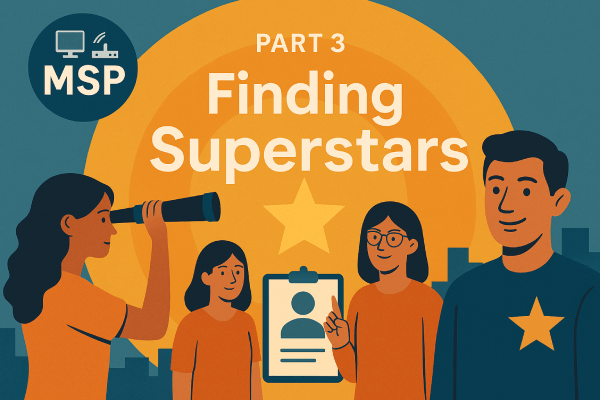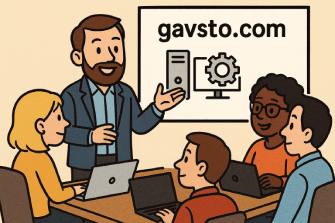This post is going to be the first in a series of blog posts where I go through the challenges, pitfalls and wins that I experienced in my 15 years as a CTO growing and maintaining an MSP. My hope is that you take something away from the lessons I have learned during that time. I worked very closely with our old company’s CEO during this period, and we both helped build the business together while I was there so you can expect a good mixture of technical and non-technical content.
I’d start by saying there is absolutely no one single ‘correct’ path to doing this successfully. There are many roads to Rome; this is just the road I travelled down. It was bumpy, full of holes, on fire and had hills that felt 2 miles high in places.
The posts will be broken down into the different growth levers used in individual areas. You can expect multiple posts on Staff, Business, Security, Managed Services and Automation. I’m going to try and tailor the advice I give so it applies to MSPs who maybe have 2-20 staff, but I think a lot of the things I learned can be used by MSPs of any size.
Staff – People are the most important asset you have in your business
They are more important than your technology stack, your processes, your profit, and your clients. They shape everything your business is, and everything your business has the potential to become. Putting people first will set you up for success all the way. That’s why I have chosen staff as the subject of the first blog post.
Hiring
One of the biggest challenges we had in my old MSP, was hiring decent people. For almost my entire tenure, we were always hiring and looking for good people. It made me feel that we were always lagging behind with our resourcing, but as I will allude to later, hiring people who are mediocre or bad can have a much bigger impact on your business and your staff than most people realise. Because they accounted for the biggest percentage of staff, I’m going to look specifically here at IT Support Engineers.
How do I attract the right people in the first place?
Practical Exercise: Go on to 2/3 job sites that support engineers would use in your local area. Search each site for 1st Line Support Engineer, 2nd Line Support Engineer and 3rd Line Support Engineer. Note down for at least 25 jobs:
- Salary Range/Direct Salary
- Experience required in years
- Benefits
- Note down whether they are MSP roles or not (you want to find a mix of both)
Do not ignore internal IT roles. You are competing against these roles! Analyse your results:
- Work out what the salary range is for each level, from lowest to highest
- Work out what experience is required, on average, for each level
Now map out your existing staff against this new information.
When I first performed this exercise, I was shocked by some of the discrepancies. The absolute first thing you must do is fix these discrepancies. If you put up a job advert for a 2nd Line Support Engineer that is advertising a significantly higher salary than what you are paying your current staff, this is a kick in the teeth to your existing, loyal staff and you will be quickly having to replace those staff too. The first time we performed this exercise, it was an expensive hit to the company, but it unlocked our ability to do something magical – we could publish a public career development framework. I would say of all the things we ever did in this area, this was the one that had the biggest impact not just on retention of our existing staff, but also in attracting new staff.
What is a career development framework, and why did it work well?
This is a document, which for us was one single side of paper that outlined:
- The Roles, (Apprentice or Junior, 1st Line, 2nd Line, 3rd Line)
- The salary range we paid for each role
- The experience needed (in years/months) at that level to progress to the next role
- The professional qualifications needed to progress to the next level
- The internal skills needed to progress to the next level
Understanding what professional qualifications and internal skills you have here relate to having a good understanding of where you want your company to progress over the next 3-5 years; this is a bi-product of having a good company vision which I will touch on in a different post.
This was incredibly effective with our existing staff, for many reasons:
- In several cases staff had large pay rises to align them on to the appropriate role so they were exceptionally grateful and happy
- The transparency worked to build trust and provided a clear roadmap for the staff, outlining key expectations, requirements, and rewards for each role. It almost completely removed confusion and ambiguity around their career development
- The framework served as a key motivator to the existing staff. By showing them the potential for growth and advancement, they could easily see the steps they needed to take to progress in their careers
- It was a clear winner in attracting new talent. We showed this framework to people at the interview stage, and it went down exceptionally well as they could see a clear career path and a clear indication of their potential salary
I want to briefly touch on what internal skills are in conjunction with this career development framework. These do not necessarily correlate to technical skills, but instead can be internal expectations or training that outline minimum requirements for customer service, communication skills, problem solving, time management, learning, innovation etc.
The framework also served to align our staff with the company vision. As the framework was designed with a clear understanding of the company vision, it ensured employee development was in line with the companies strategic goals which fostered a strong sense of unity and purpose among the staff in the company.
This doesn’t mean that the framework has to be exactly identical for each person. It is exceptionally important to take into account an individual’s goals for where they wanted to get to in the future. We did this by tailoring the qualification portion of the framework as per the individuals goals, while still aligning them to what the company needed long term. A number of our staff had security related careers in mind, others had Microsoft 365, others preferred standard Windows Server Administration. We ensured generic qualifications were in place for what the company needed long term (like 365 Administration), while including specialist qualifications that aligned with what that member of staff needed to do
Practical Exercise: Write out the document outlined above. Include a list of the roles in your organization from top to bottom, the salaries you pay for the people in those roles at the moment (including the number of years’ experience they have in that role at the moment)
- Can you see any patterns? Are you underpaying/overpaying some people?
- Is your salary distribution fair? Does it align with their experience?
In the next post, I will be focussing on how you can attract the right candidates to your business.






Start the conversation